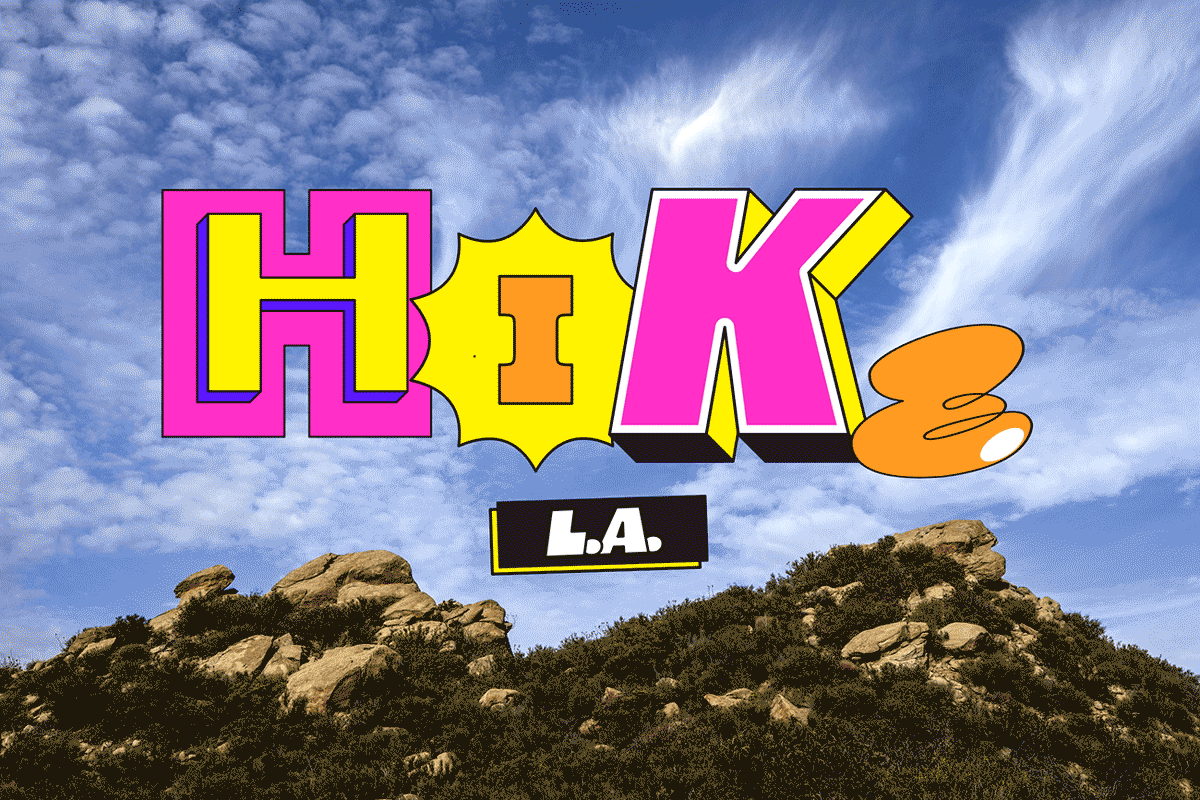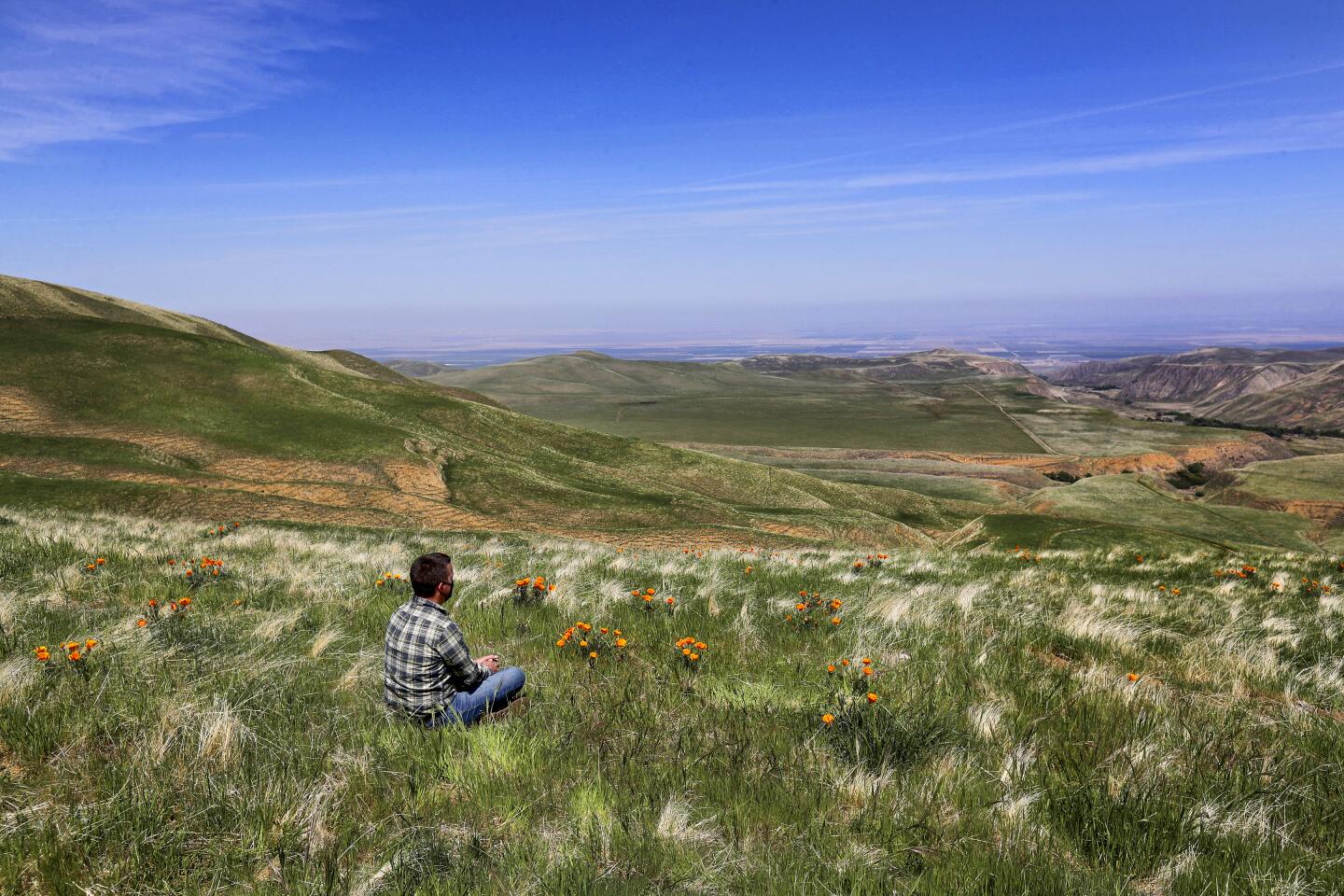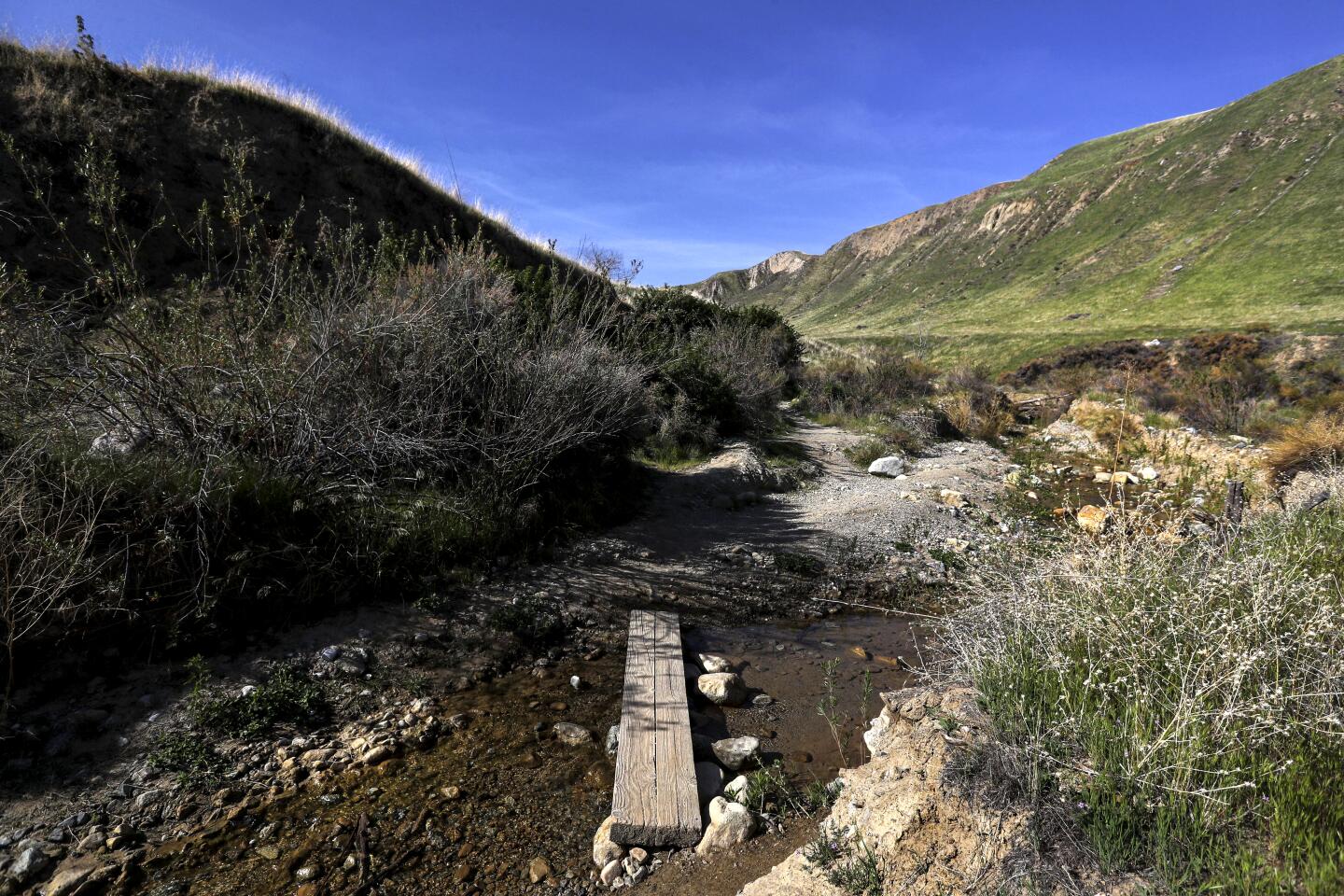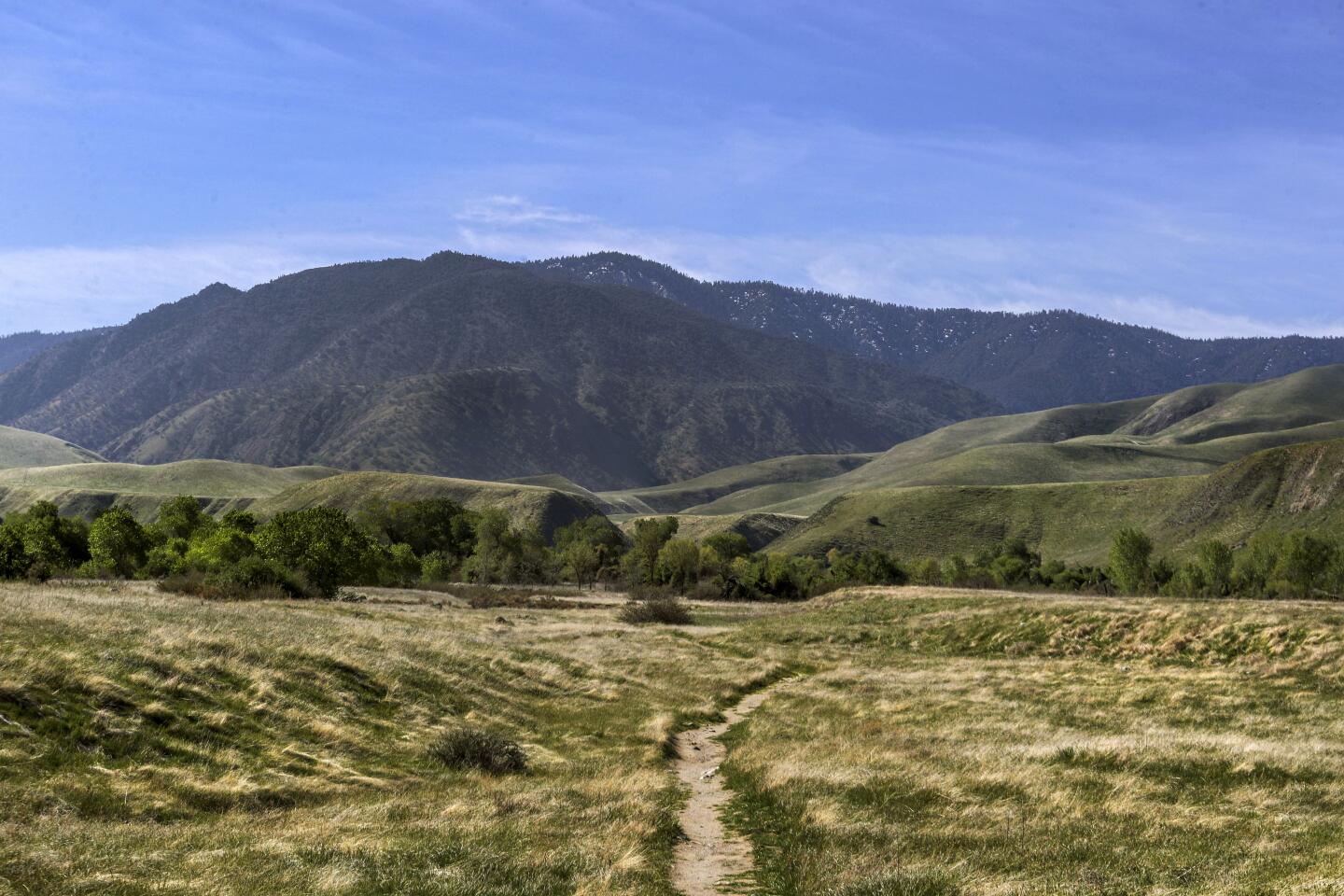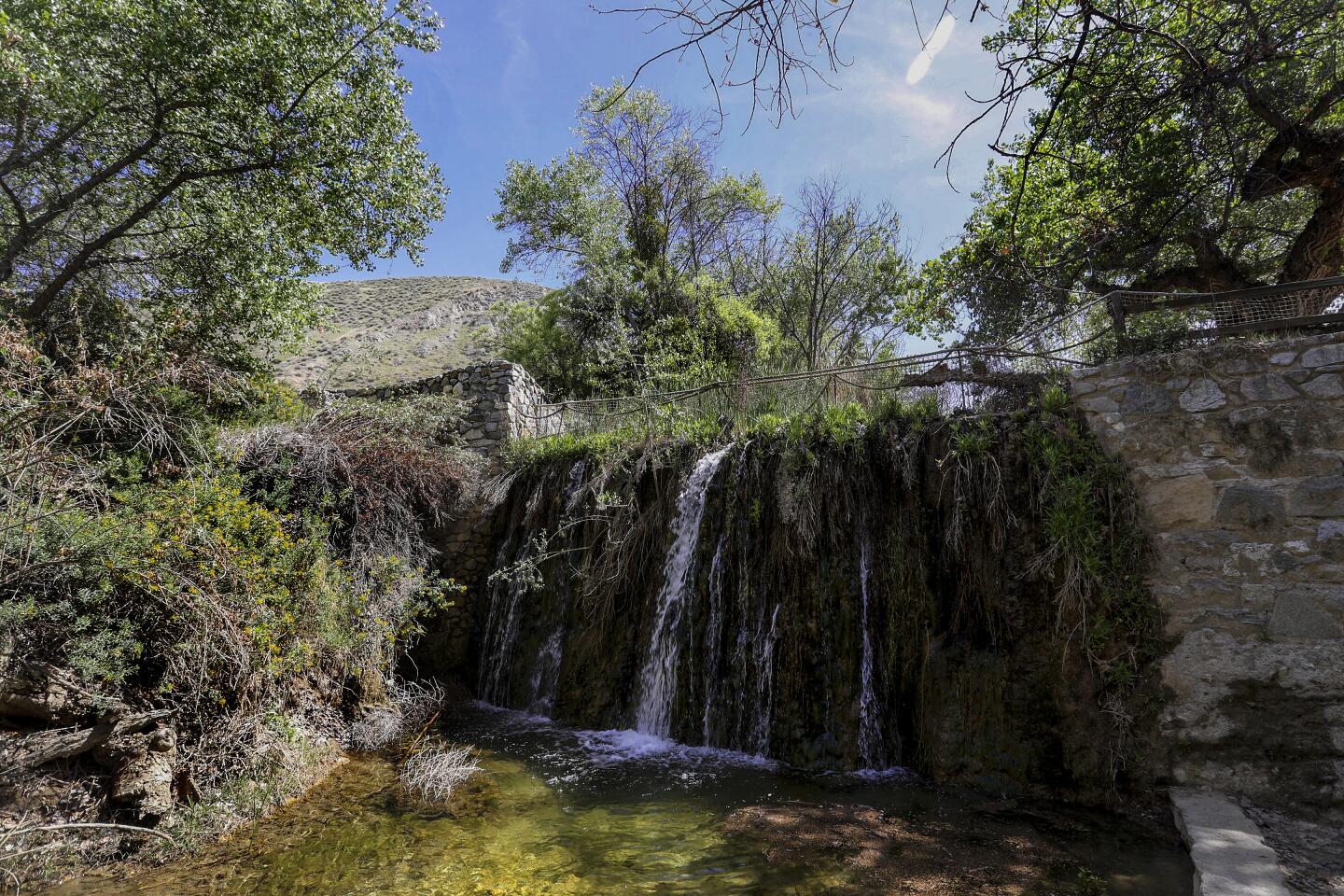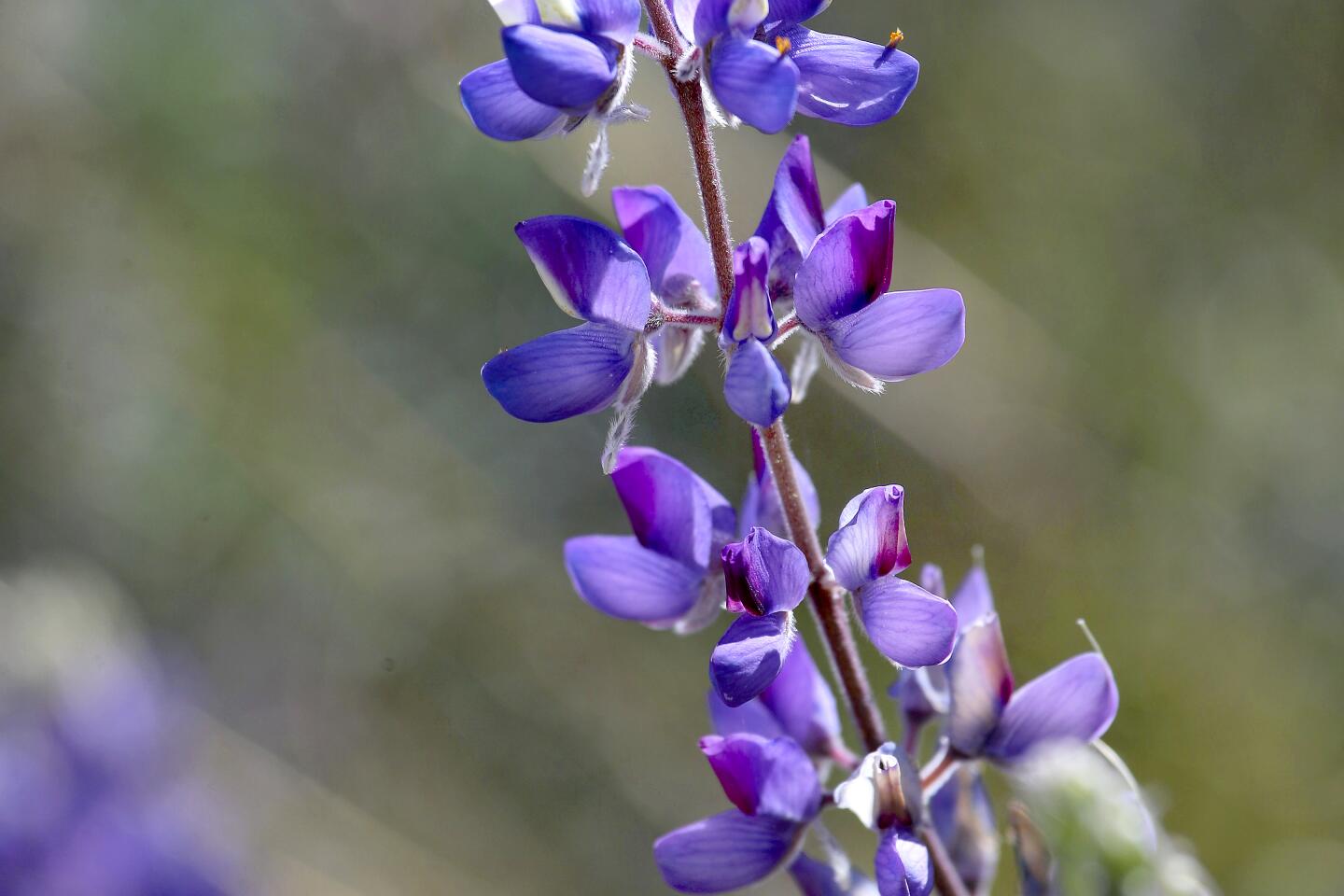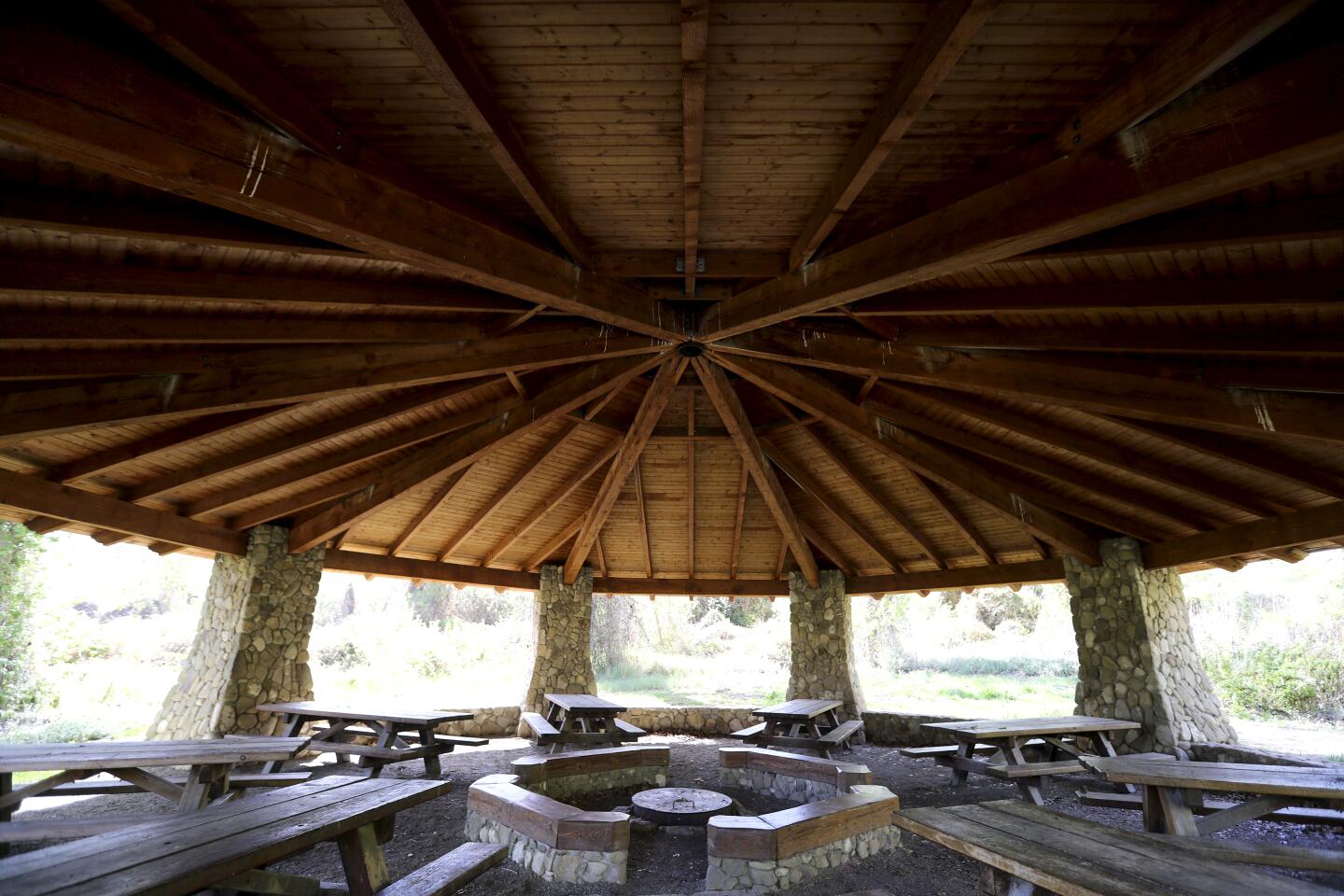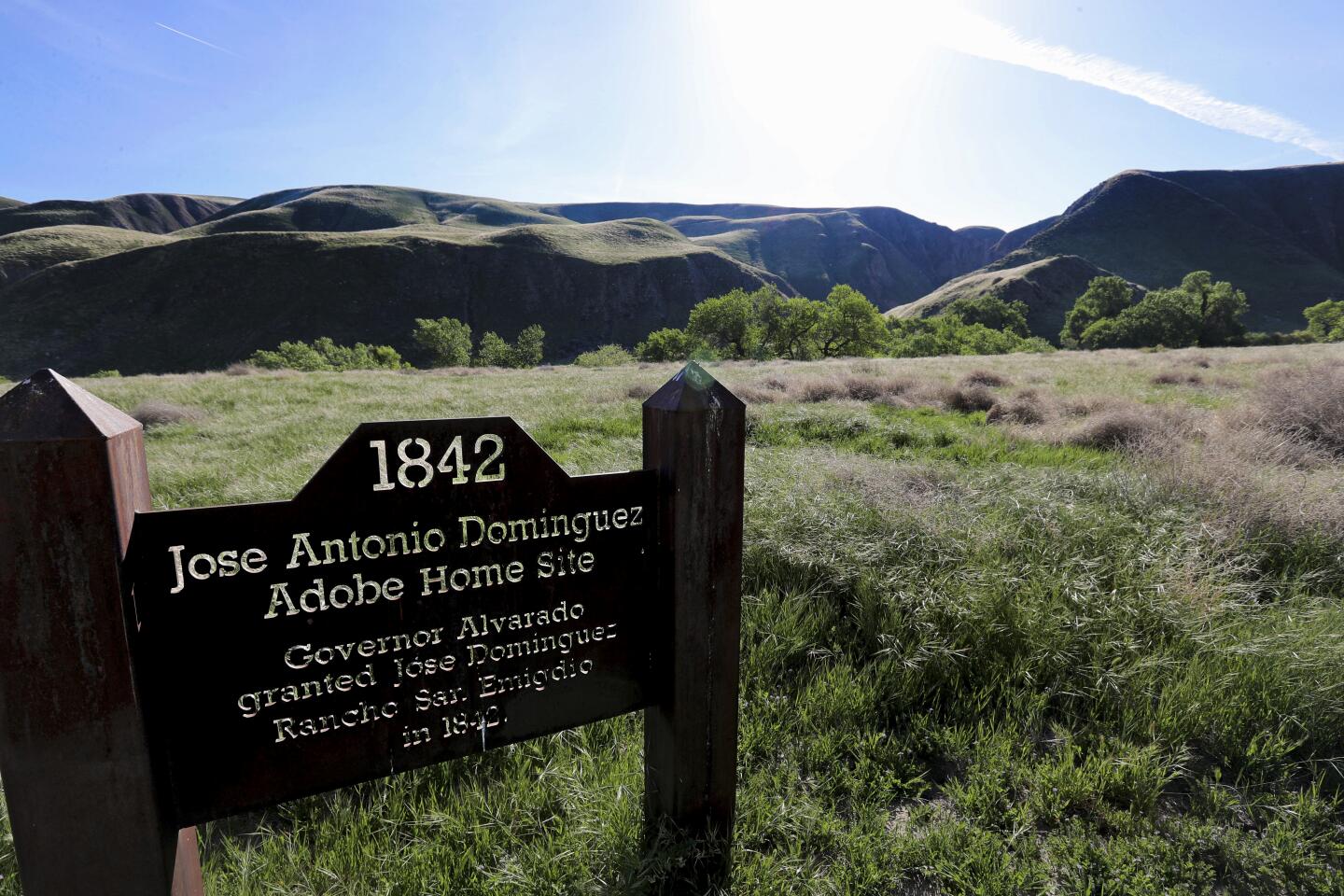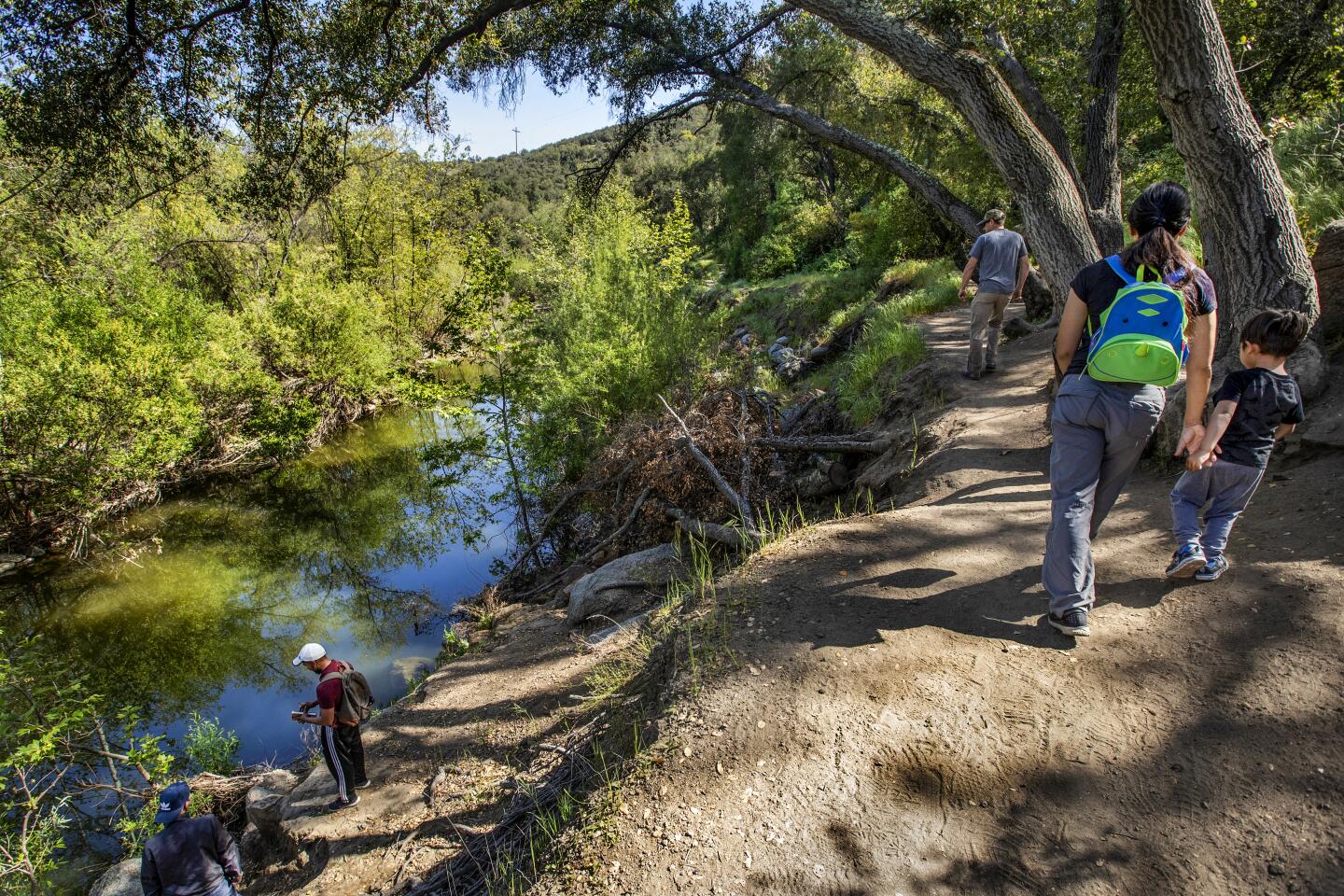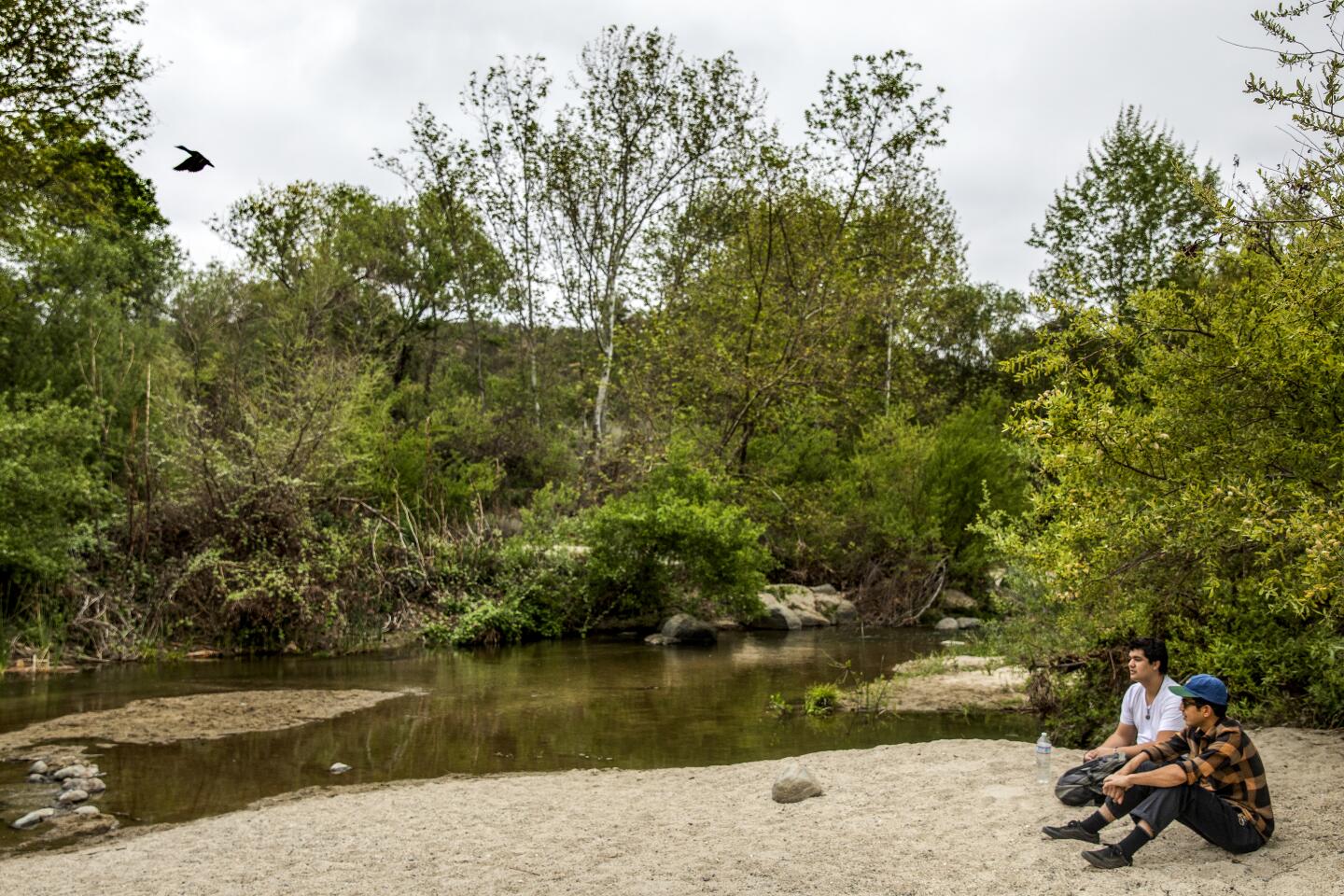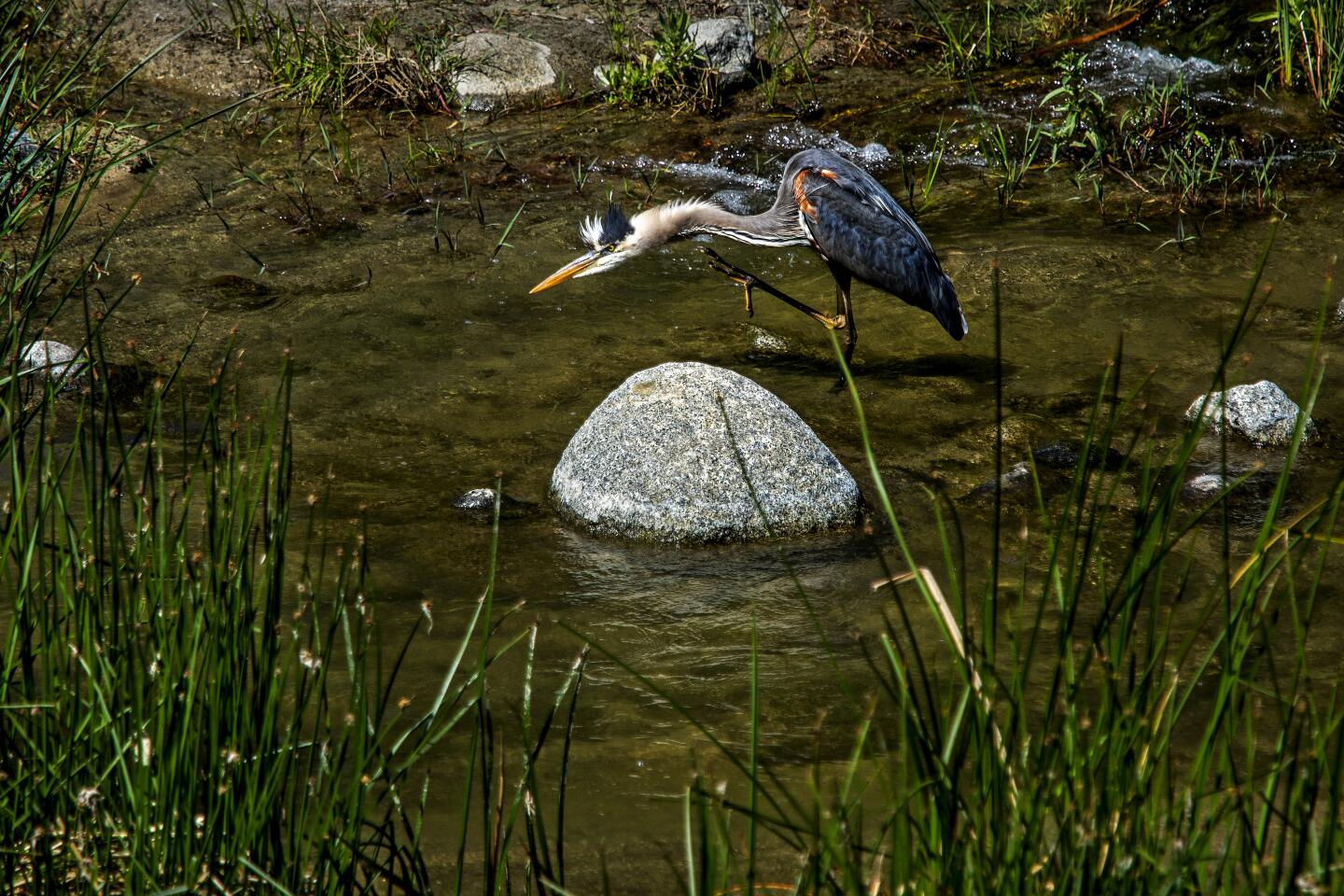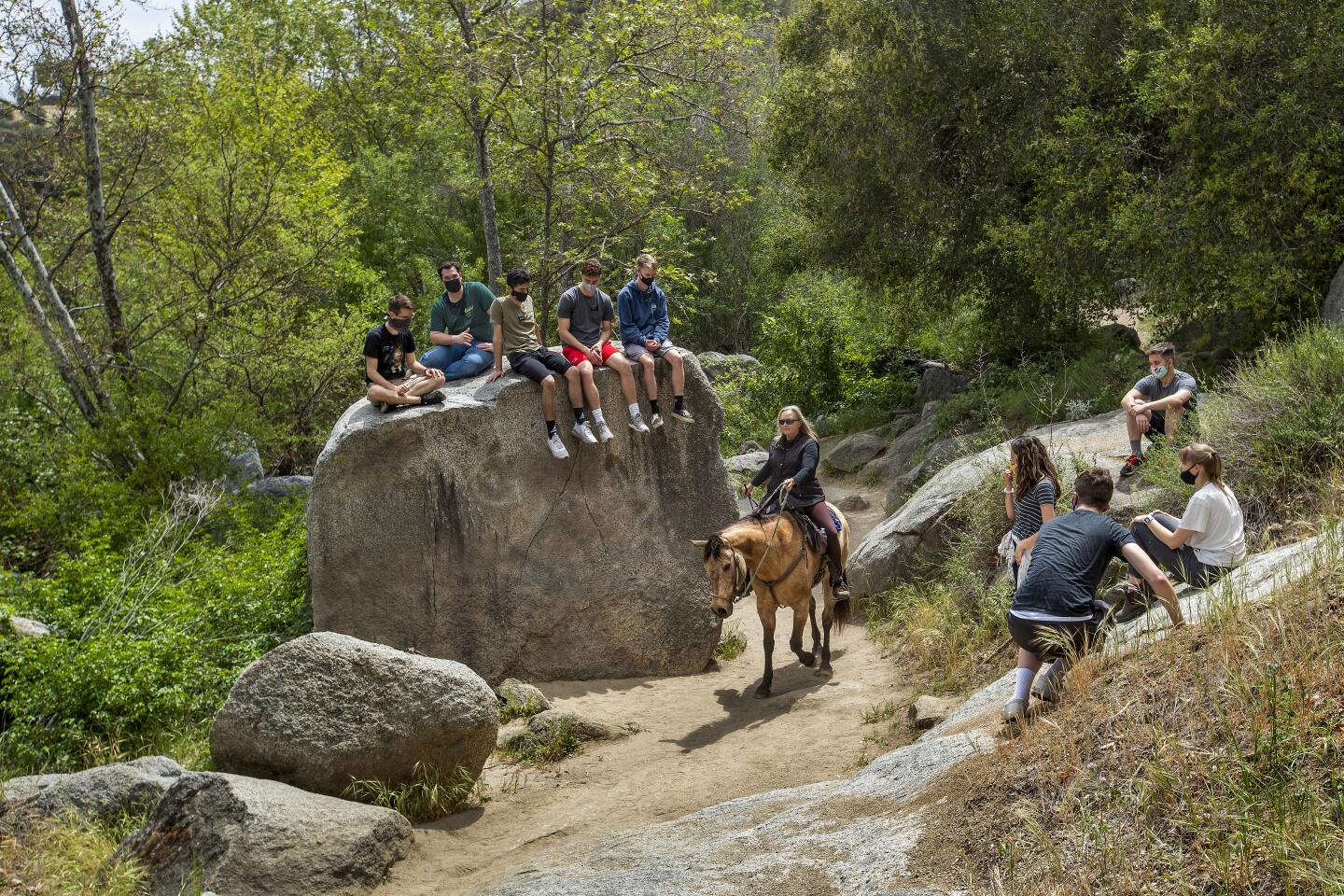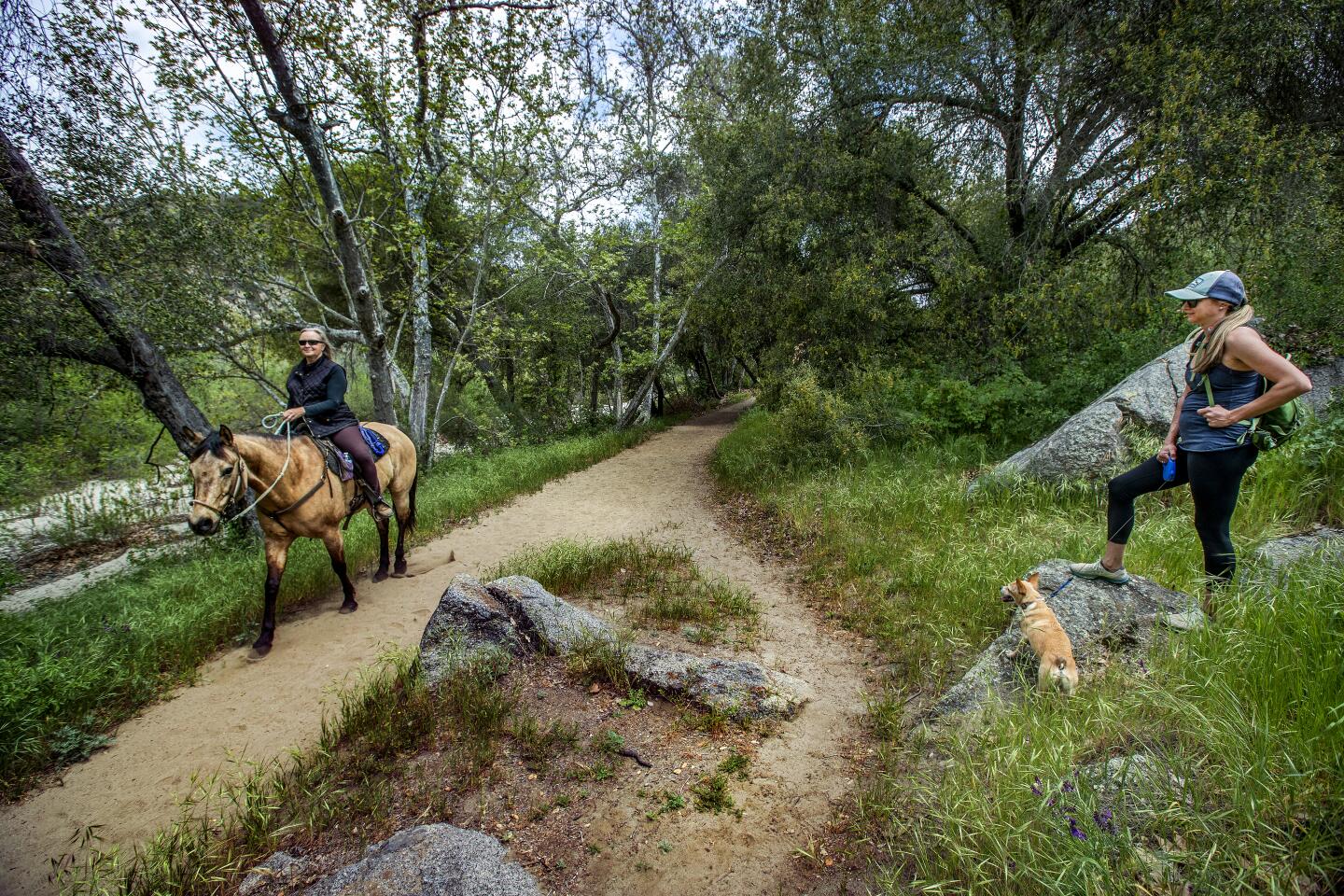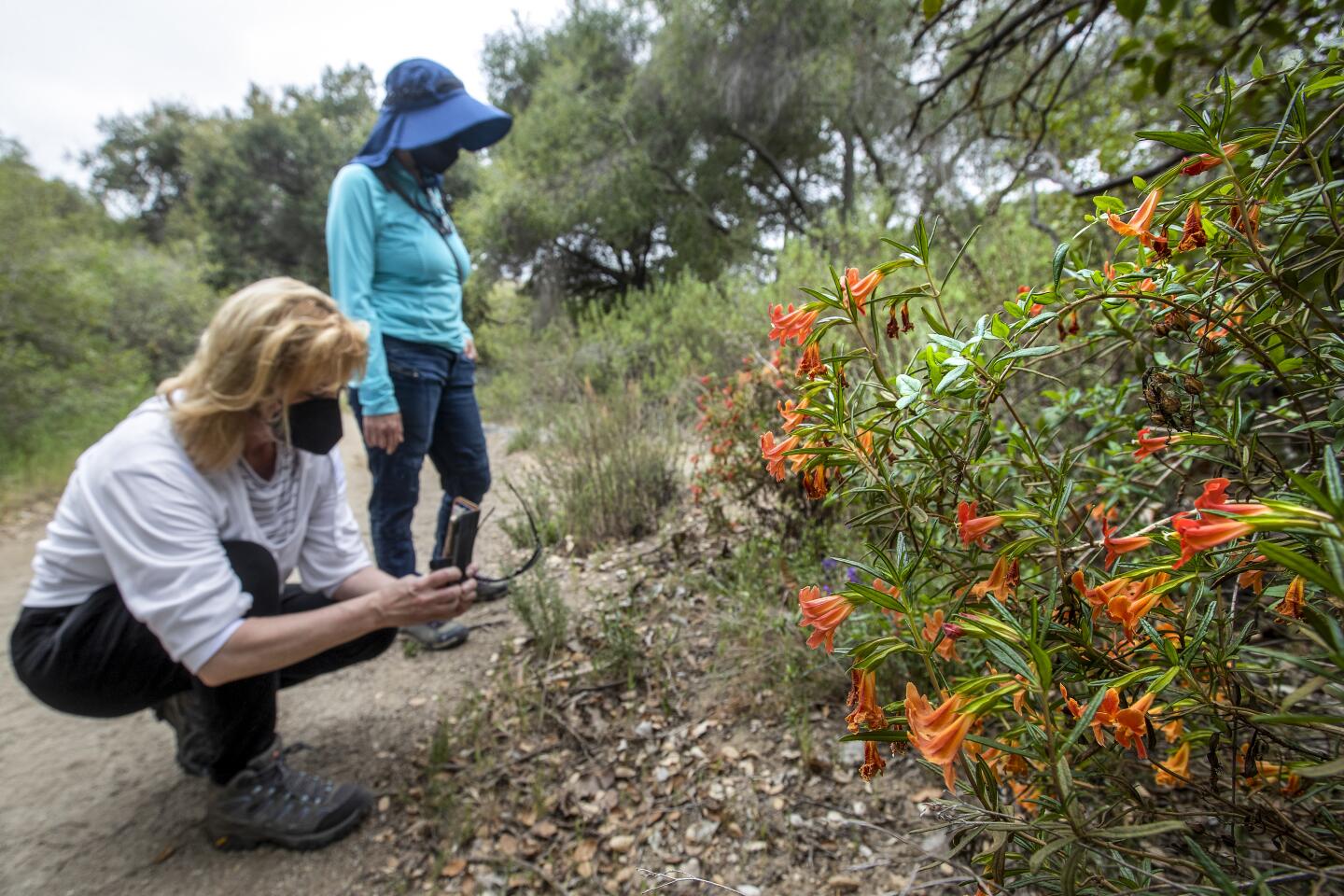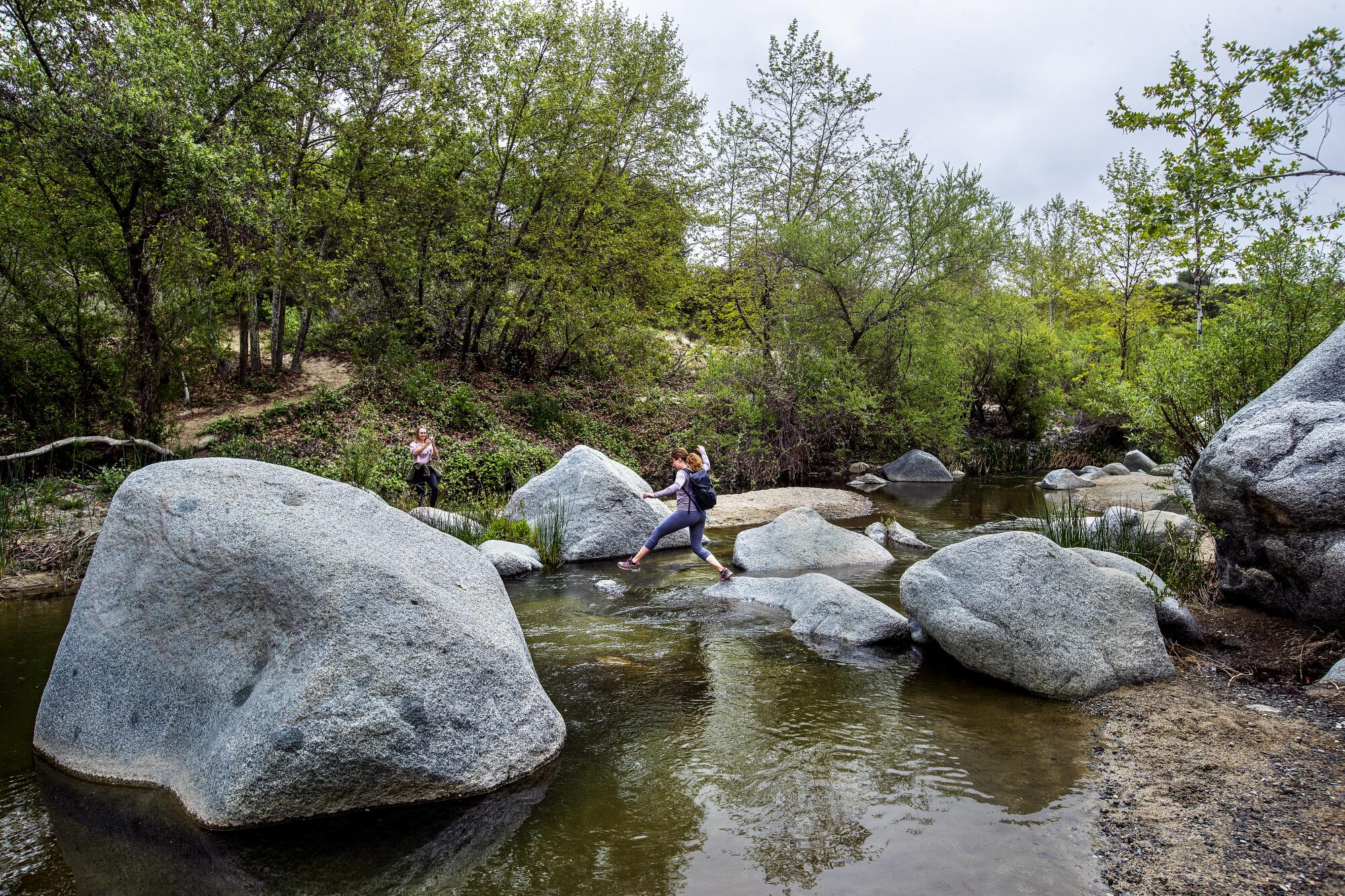
- Share via
The COVID-19 pandemic didn’t stop 1 billion of us from streaming into the country’s national parks in 2020. In fact, it increased our desire to take refuge in the outdoors, leading to complaints about overrun trails and picnic spots in some of California’s most popular places. One alternative to the big-park experience: nature preserves, which provide an intimate way to experience nature without the crowds.
Why hike in Los Angeles? Lots of reasons. Use our guide to navigate 50 trails in Southern California, plus tips on gear and treats for the trail.
Preserves throughout the West are often run by private conservancies. They can be large or small but share a common goal of protecting particular landscapes.
“Often they’re in place to protect certain plants or animals or ecosystems types or special features; sometimes it’s historical or archeological features,” said Nature Conservancy biologist Sophie Parker. As an example, for 50 years, her organization has worked to protect the remote Amargosa River in the Mojave Desert and the native pupfish and Amargosa toads that live nowhere else.
Preserves also reflect an ethos of land stewardship and a strong belief that wild places should be open to the public for free. The Wildlands Conservancy, which manages more than 20 preserves in the West, believes that access to nature is a birthright. One of its core beliefs: “Free access to our preserves removes the socio-economic barriers that tend to promote a disconnect with nature.”
You won’t find traffic, restaurants, snack stands, lodgings, tour buses and shops at nature preserves. “No stores,” Landon Peppel of the Wildlands Conservancy said during a recent visit to Wild Wolves Preserve in Bakersfield. “All we sell is nature.”
Whether you’re looking for ocean views or desert landscapes or soaring mountain peaks, Los Angeles offers miles upon miles of strikingly different trails.
To get the most out of your visit, bring binoculars and fields guides that can help you identify species that may exist nowhere else. Seek on-site docents and rangers (some may not be available because of the pandemic) who can take you on a tour and explain what’s special about the site. Some preserves, such as Wind Wolves, offer camping, but many don’t.
Here are five worth visiting that are an easy drive from Los Angeles.
Wind Wolves Preserve
16019 California 166, Bakersfield
Open 8 a.m. to 6 p.m. daily (closed Christmas Eve and Christmas Day)
Free entrance and parking; free camping (tents and vans only)
Dogs on leashes OK
People sometimes think they see wolves at Wind Wolves Preserve. After all, it’s right there in the name. A sign at the entrance explains that “wind wolves” refers to “the undulating grasses that resemble running animals.” The tawny ears that occasionally pop up from the shrubby chaparral suggest a sighting, but they belong to coyotes, convincing stand-ins.
What you see at this preserve depends on when you go. During a visit in early April, the hills were green but lacked the poppies and lupine that typically cover hillsides during rainier years. “It can look like a paint can went off,” said Peppel, resource conservation director for the Wildlands Conservancy. A herd of tule elk, introduced in 1998, dots the distant hills.
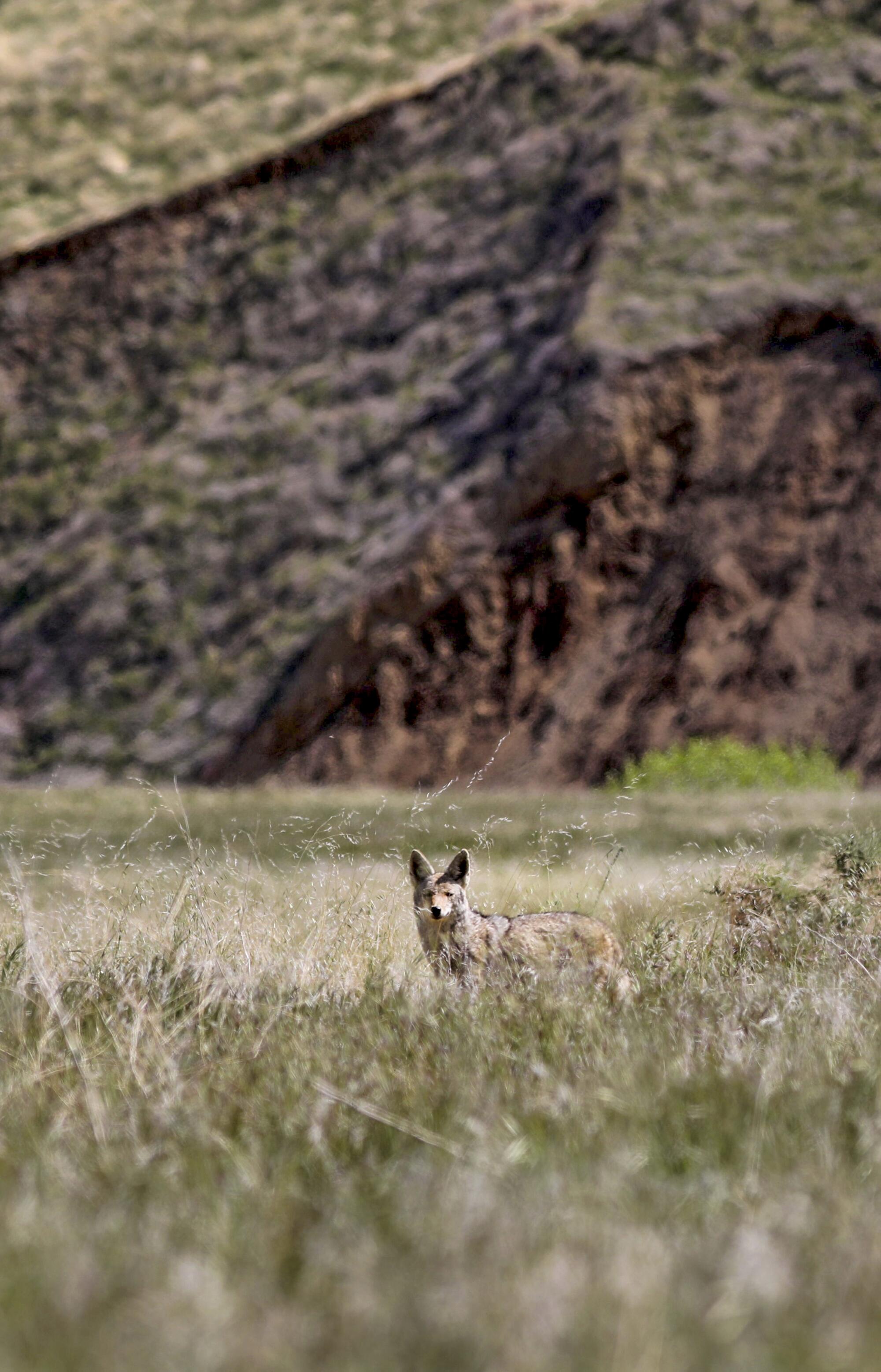
It’s hard to believe the 93,000-acre preserve exists in the southern San Joaquin Valley, better known for oil fields and farmlands that stretch from Bakersfield to Stockton.
“This is one of the most dynamic landscapes in California,” Peppel said, referring to the five eco-regions on the property, which require careful attention. The site was a cattle ranch before the nonprofit bought the property more than two decades ago to protect and conserve the spot where the Transverse Ranges, Coast Ranges and the Sierra Nevada meet. Elevations in the preserve start with rolling grasslands at 600 feet and climb to juniper and pinyon forests at 6,000 feet.
It has a year-round creek lined with sycamore and cottonwood trees, 40 miles of hiking trails, a dozen campsites, a small waterfall, considerable rock art and cultural treasures (off-limits to the public because they are fragile), and thousands of plant and animal species.
Summer brings much higher temperatures, so get there early in the day to avoid midday heat. From California 166, follow a long paved road past a stone quarry to the well-marked entrance.
When you’re ready to explore, take the easy San Emigdio Canyon Trail that follows the creek about a mile to Raven’s Landing, which offers good views of the canyon and the San Joaquin Valley. If you want to go farther, it’s 3.8 miles one way.
The more ambitious Tule Elk Trail, steep in places, climbs the other side of the creek to an overlook with sweeping views (4.6 miles each way). Bicyclists can take the El Camino Viejo Bike Trail down the canyon, an easy 5.2-mile course each way. Check out the hiking/biking map posted at trailheads for more options.
Santa Margarita River Trail Preserve
4251 River Edge Road, Fallbrook, Calif.
Open daily 8 a.m. to 5 p.m.
Free entrance and parking
Dogs on leash OK
The trail that hugs the Santa Margarita River in the preserve almost commands you to take it slow. It’s woodsy and surprisingly lush as you follow one of Southern California’s last free-flowing rivers (meaning no concrete channel, no reservoir, no damming).
Tiny white flowers sprout from miner’s lettuce, and larger white flowers from wild cucumber on the bank opposite the river; a great blue heron and a few egrets linger at the water’s edge. Water is a rare sight on hikes, so it’s worth taking your time to explore and use your iNaturalist app to identify some of the thousand plants and animals that call the preserve home.
Trails are well-marked in this almost 1,400-acre preserve, managed by the Wildlands Conservancy. The River Trail takes you along the water for 2½ miles, or you can take the 500-Foot Trail that winds up chaparral slopes and offers views of nearby GavalinMountain.
Five trails are marked on the map (available at the trailhead), all rated moderate. Expect to share them with horseback riders, trail runners and dog walkers. There are benches in shady spots along the river walk if you want to pause or picnic. (Parking fills quickly on weekends; consider a midweek visit instead.)
Elfin Forest Recreational Reserve
8833 Harmony Grove Road, Escondido, Calif.
Open daily 8 a.m. to half-hour before sunset
Free entrance and parking
Dogs OK on leash and off-leash at posted times
“Elfin forest” refers to chaparral, which is the dominant habitat in this 784-acre preserve managed by the Olivenhain Municipal Water District. It’s a sweet site where you can hike on trails along the creek or up above the canyon. Eleven miles of trails are open to hikers, mountain bikers and horseback riders. Oak Idyll, a small grove of oak trees with a stone bench that faces Escondido Creek, is a good place to relax or meditate. From the parking lot, the walk to the grove is less than a quarter mile, with easy terrain suitable for young children.
Those who want views of the surrounding hills and mesas should head to the Way Up Trail, an uphill 1½-mile one-way hike to the Harmony Grove overlook at about 1,000 feet in elevation. You can press on and hook into more routes that overlook nearby Olivenhain Dam. Trails are well marked on a single-sheet map available at the trailhead (the nature center is closed due to the pandemic).
The preserve usually requires dogs to be leashed, but at certain times they may be under “voice command.” There’s also a heat index chart that explains when it may be too hot to take your dog.
Volcan Mountain Wilderness Preserve
1209 Farmer Road, Julian, Calif.
Open 8 a.m. to sunset daily (except Christmas)
Free entrance; park on the road
Dogs OK on leash
Volcan Mountain preserve is worth a stop even on a blustery, rainy day. It’s 2,900 acres, with a mix of conifers, oaks and manzanita that gives you a big-woods feel as you explore not far from downtown Julian.
Start at the well-marked gateway before heading up the trail to the summit on a 5.4-mile round-trip hike (moderately strenuous) with 1,200 feet of gain. You’ll see a marker at the top that notes the mountain was once considered as an observatory site; Mt. Palomar was selected instead. Summit views take in the desert and San Diego (on clear days).
If you are short on time, take the Five Oaks Trail, a single-track route that weaves through thick manzanita and lupine and then return on the main road. Most trails are open to mountain bikers and horseback riders.
Ramona Grasslands County Preserve
17430 Highland Valley Road, Ramona, Calif.
Open daily 8 a.m. to sunset
Free entrance and parking
Dogs OK on leash
The drive along Highland Valley Road takes you on a pretty winding route past wineries (worth a stop before or after) through the Santa Maria Valley. Hiking trails at the preserve are short and exposed, with a pastoral feel. Cows graze on this land — some close to the trail — home to sprawling oak trees and boulder-strewn fields. Trails are marked with a fence to keep you from straying into fragile areas.
The easy Wildflower Trail (scant flowers this year) is a two-mile loop that takes you past a picnic bench overlooking a pond. The easier Meadow Loop covers less than a mile. Both are flat and good for young children. Birders should look for golden eagles, which hunt in these grasslands, and burrowing owls.
San Diego County partnered with the Nature Conservancy to create the preserve. Three others nearby make for an easy group visit: Barnett Ranch, Luelf Pond and Simon county preserves.
More to Read
Sign up for The Wild
We’ll help you find the best places to hike, bike and run, as well as the perfect silent spots for meditation and yoga.
You may occasionally receive promotional content from the Los Angeles Times.

